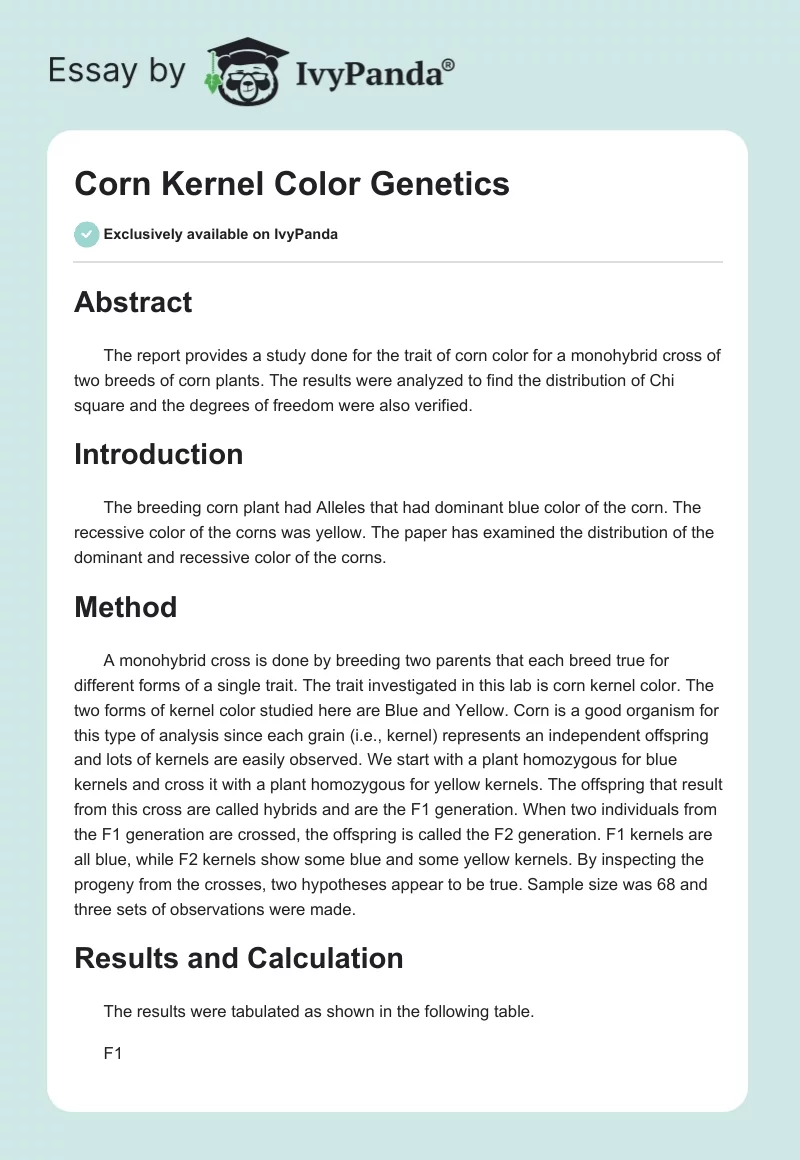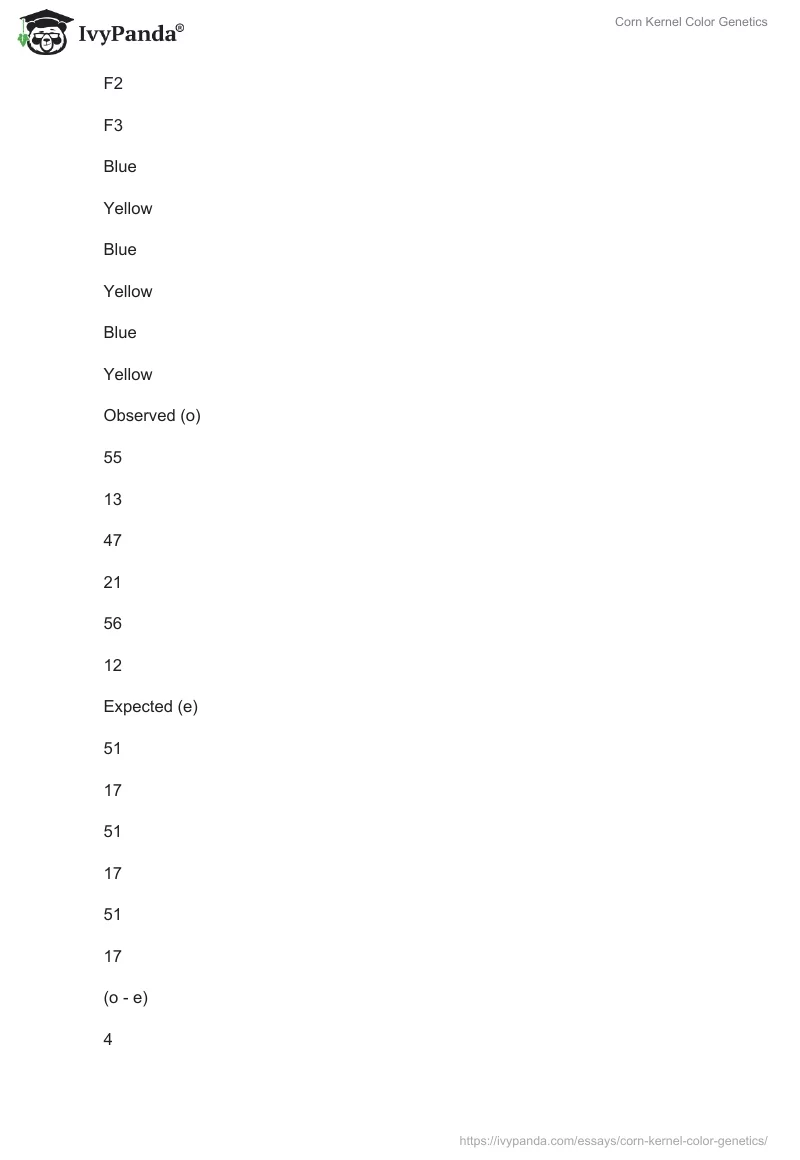Abstract
The report provides a study done for the trait of corn color for a monohybrid cross of two breeds of corn plants. The results were analyzed to find the distribution of Chi square and the degrees of freedom were also verified.
Introduction
The breeding corn plant had Alleles that had dominant blue color of the corn. The recessive color of the corns was yellow. The paper has examined the distribution of the dominant and recessive color of the corns.
Method
A monohybrid cross is done by breeding two parents that each breed true for different forms of a single trait. The trait investigated in this lab is corn kernel color. The two forms of kernel color studied here are Blue and Yellow. Corn is a good organism for this type of analysis since each grain (i.e., kernel) represents an independent offspring and lots of kernels are easily observed. We start with a plant homozygous for blue kernels and cross it with a plant homozygous for yellow kernels. The offspring that result from this cross are called hybrids and are the F1 generation. When two individuals from the F1 generation are crossed, the offspring is called the F2 generation. F1 kernels are all blue, while F2 kernels show some blue and some yellow kernels. By inspecting the progeny from the crosses, two hypotheses appear to be true. Sample size was 68 and three sets of observations were made.
Results and Calculation
The results were tabulated as shown in the following table.
- Was your chi square value greater or less than that of a probability of (0.05) with 1 degree of freedom? Greater than
- Greater than.
- Less than.
- Do you accept or reject the null hypothesis? ACCEPT
- Accept.
- Reject.
- How confident are you that the trait for yellow/blue kernel color is controlled by a single pair of alleles? 95% sure
- 95% sure.
- 0.05% sure.
- 10% sure.
- No way, I rejected the null hypothesis.
Conclusion
The research shows that the null hypothesis theory holds true. The dominant Allele is Blue and the recessive is Yellow. The probability of ¾ ratio holds true and any variations are due to random causes.
References
Mitchell Lawrence G., Campbell Neil A. (2007). Biology: Concepts & Connections with Student CD-ROM, 5th Edition. Publisher: Benjamin Cummings.


